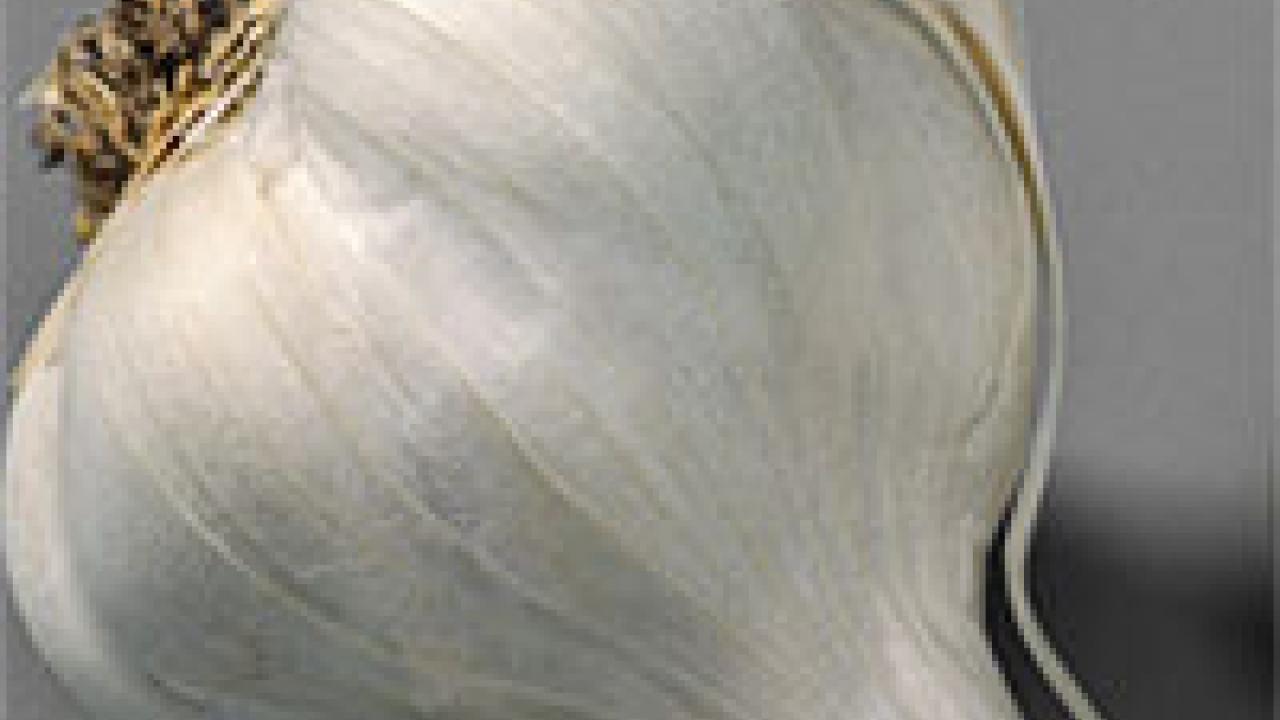The bulb that made Gilroy famous may soon be able to make a comeback in California thanks to a new fungicide tested by University of California scientists.
California's garlic acreage, which produces 86 percent of the nation's garlic, has declined dramatically in recent years from "white rot," a rapidly spreading, persistent soil fungus that destroys garlic, onions and related plants. Statewide, growers have abandoned garlic production on more than 13,000 acres of prime farmland in the San Joaquin Valley counties of Kern, Kings and Fresno. And in Gilroy, the famed "Garlic Capital of the World," which celebrates its annual garlic festival this weekend, only 500 acres of garlic remain in cultivation.
However, a commercially developed natural fungicide, tested in recent years by UC Davis plant pathologist Mike Davis and other UC scientists, has proven to be 95 percent to 99 percent effective in controlling the virulent fungus. The garlicky-smelling sulfur-containing compound known as DADS, for diallyl disulfide, is found naturally in garlic and onions. It acts as a biostimulant when applied to the soil, tricking white rot into germinating. Then, in the absence of a crop, the fungus quickly dies. Researchers are hopeful that DADS will provide growers with a reduced-risk tool in an integrated control program for white rot.
"I'm optimistic that this fungicide will enable growers to produce a profitable crop on infested fields," Davis said. "The next phase of our research, a demonstration project beginning this fall, will focus on how this compound performs in a commercial field."
Davis began studying DADS in 1999 with a grant from the California Department of Pesticide Regulation. He has tested the product at a variety of locations, including the University of California's Intermountain Research and Extension Center in Modoc County, in northern Nevada, and at several other California locations.
"This research is of critical importance, given the pressures on our industry," said Robert Ehn, technical manager for the California Garlic and Onion Research Advisory Board. "As white rot spreads, more and more acreage is being forced out of production."
"We know this compound works," Ehn said of the new fungicide. "That's not the issue. This is not a conventional pesticide as it must be used at least a season in advance of planting an allium crop. We need to see how it fits into a farm rotation, and that requires the university's help through evaluation of commercial plots and meetings with growers."
The California Department of Pesticide Regulation recently announced funding for a two-year project to demonstrate how DADS can be used in growers' fields in combination with other fumigants. The project could be a major boost for California growers, who cultivate more than 50,000 acres of garlic and onions worth more than $300 million each year.
In addition to Davis, UC scientists involved in this research include UC Cooperative Extension farm advisors Joe Nunez of Kern County, Richard Smith of Monterey County, Thomas Turini of Fresno County, Shannon Mueller of Fresno County and Harry Carlson of Modoc County.
Media Resources
Pat Bailey, Research news (emphasis: agricultural and nutritional sciences, and veterinary medicine), 530-219-9640, pjbailey@ucdavis.edu
Mike Davis, UC Davis Plant Pathology, (530) 752-0303, rmdavis@ucdavis.edu
Robert Ehn, California Garlic and Onion Research Advisory Board, (559) 297-9322, robertehn@sbcglobal.net
John Stumbos, College of Agricultural and Environmental Sciences, (530) 754-2261, jdstumbos@ucdavis.edu
